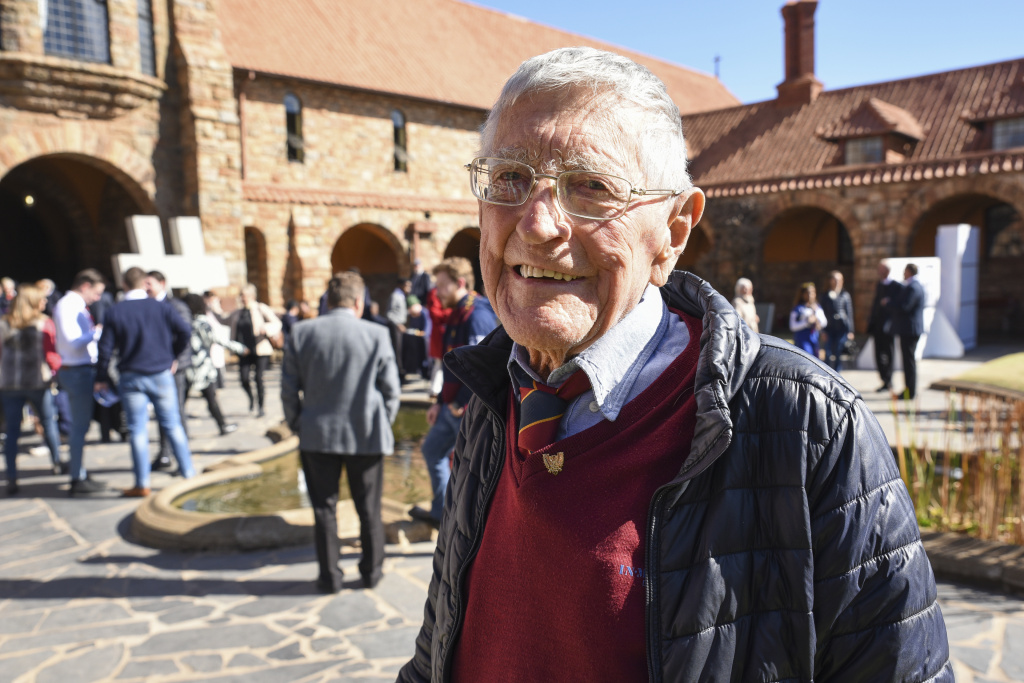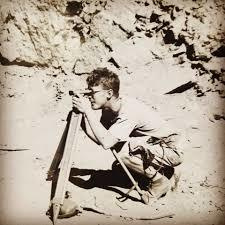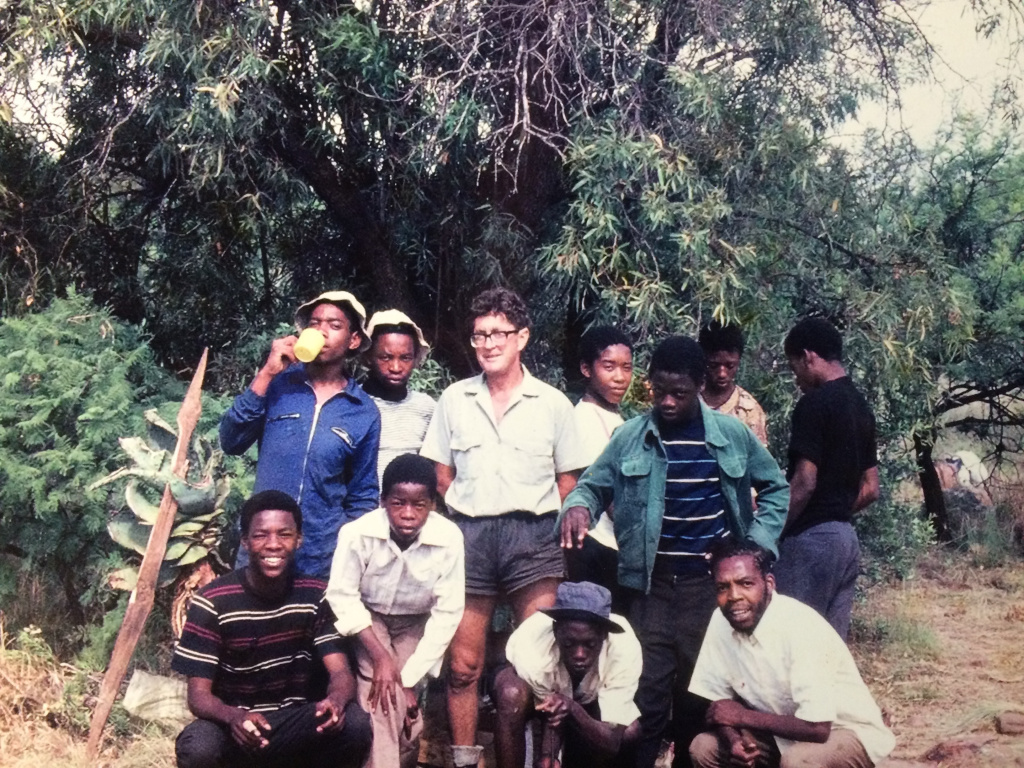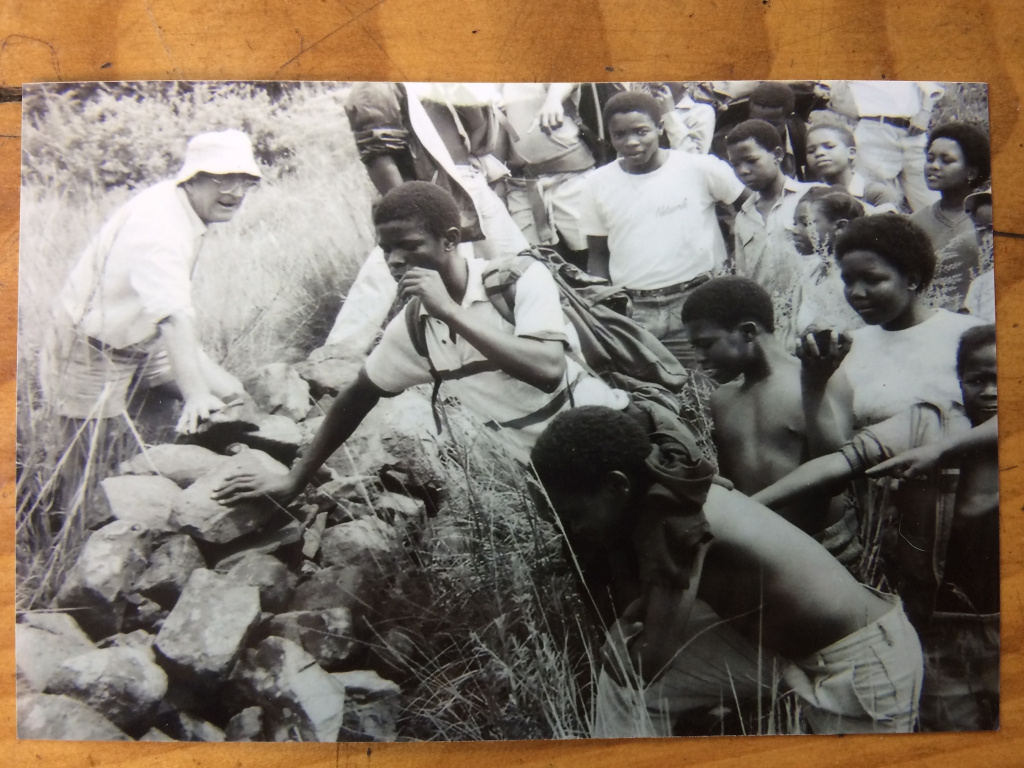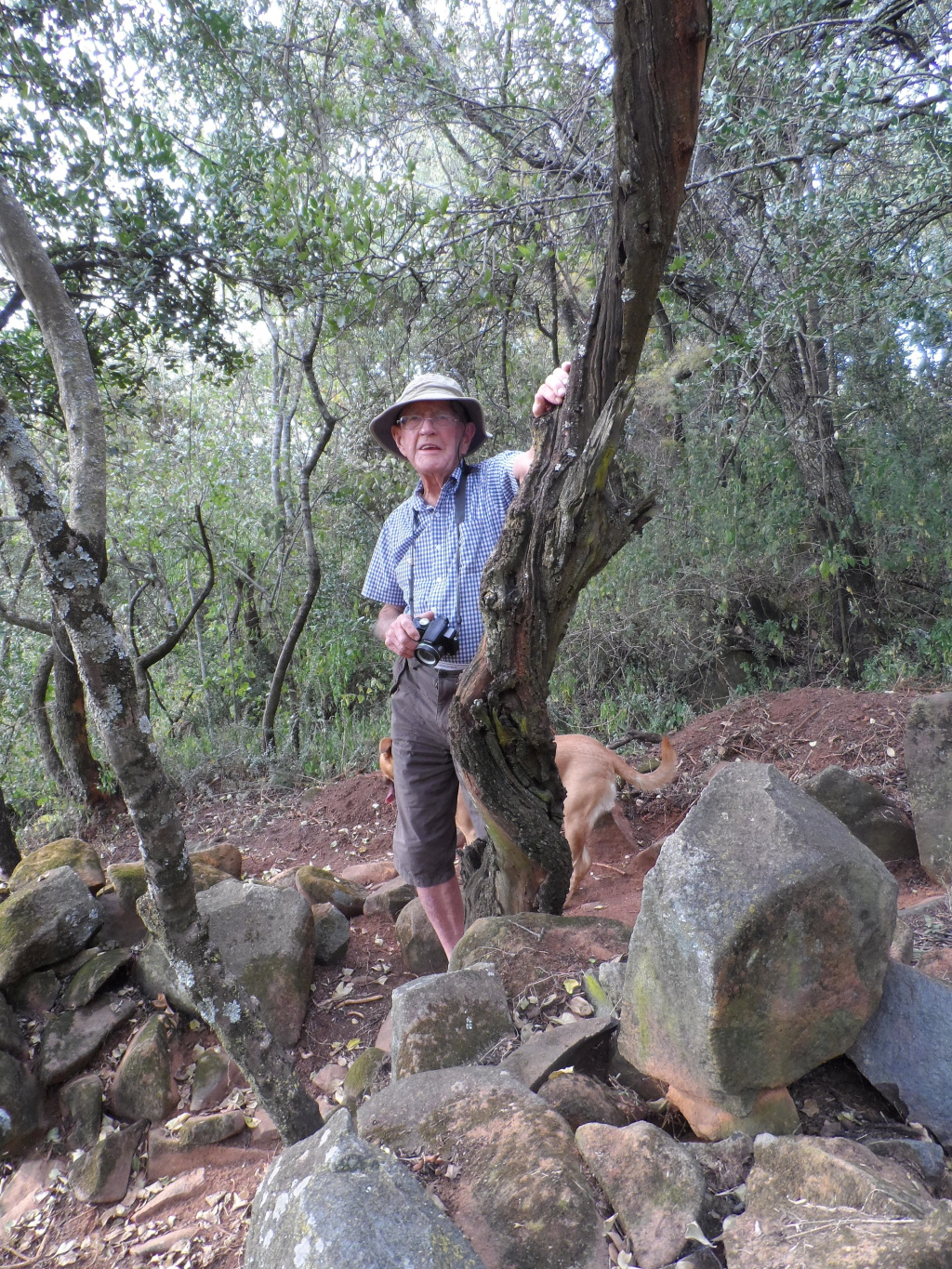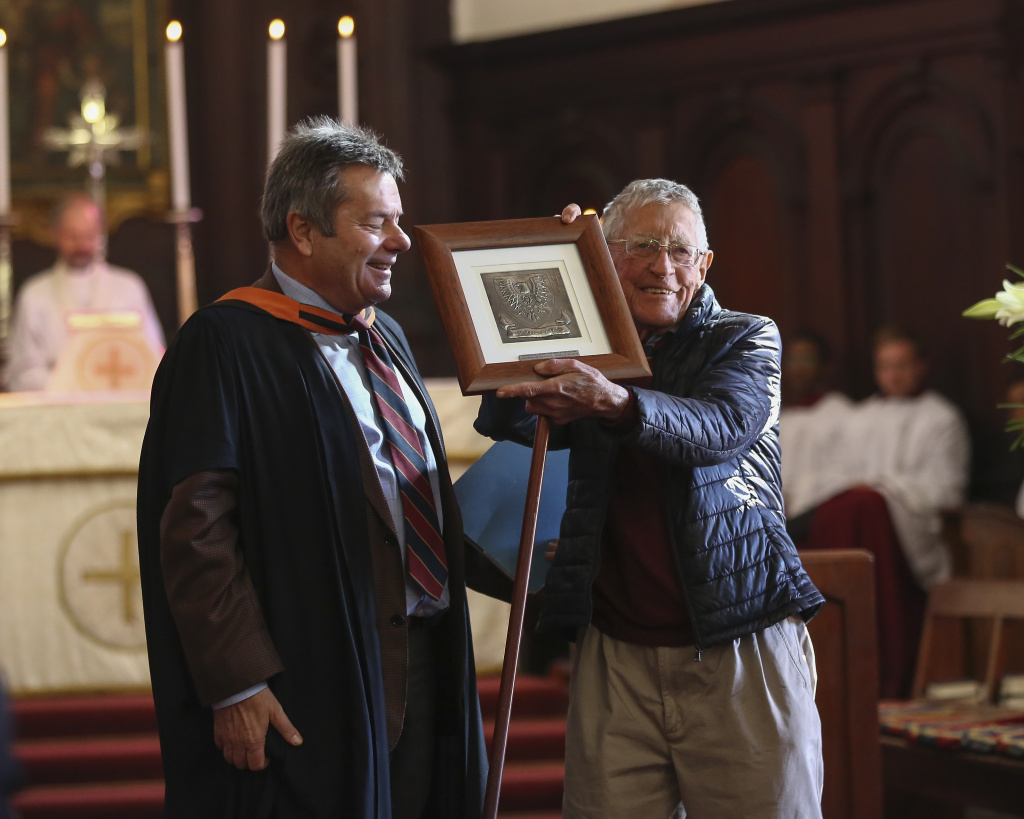Revil John Mason (OJ Thomson 1946) died on 23 August 2020 at the age of 91 years, scarcely a year after receiving the Golden Eagle Award on Gaudy Day, 2019.
Revil was born on 10 February 1929 and grew up in Saxonwold. He entered St John’s Prep in 1936, and he always recalled with fondness his memories of Mr Dodson and Miss de la Hunt.
After matriculating in 1946, Revil studied at the University of Witwatersrand and obtained a B Com degree, garnering several prizes, including the Aitken Medal for the Best Graduate in Commerce, together with the Chamber of Industries Medal and the Dean’s award. However, after attending a lecture by Prof Raymond Dart, he became fascinated by archaeology. He proceeded to study Archaeology at the University of Cape Town where he again excelled in his studies and obtained a doctorate at the age of 28 years old. At the young age of 24 years, he successfully excavated Makapansgat, discerning three layers of the Stone Age, a new discovery in South African Archaeology.
During the 1950s he often visited St John’s, talking to the boys about new archaeological finds and helped the Museum Club to re-establish the Museum in the Community Room. Some years ago he led an archaeological dig with the College Archaeology Club and helped the boys excavate a Boer War site in the Magaliesberg.
Revil was appointed a professor by Wits as a successor to Professor Clarence van Riet Lowe. In 1976 the university created the Archaeological Research Unit for Professor Mason and his staff and appointed him as Director, a post he held until his rather early retirement in 1989.
After that Revil continued to excavate significant sites, including a miraculously preserved 12 000 years BP, Late Stone Age shelter, 150m from the N1 Allandale exit in 1996. During his career, Revil determined the historical significance of Melville Koppies and other areas of Johannesburg through his tireless and meticulous investigations of Stone Age and Iron Age sites. He identified prehistoric iron furnaces and Tswana villages from Lonehill to Klipriviersberg in Johannesburg.
Professor Mason mapped the entire North West and Gauteng provinces and became a champion of pre-colonial Early African Iron Age technology. In this way Revil Mason debunked the myth of the “empty land”, a version of history that propped up the Apartheid regime and that was taught in history classes across South Africa.
Besides being an archaeologist, Revil was also a keen explorer, adventurer and an avid mountaineer. In his early twenties, he explored Kaokoland and went up the Brandberg in Namibia, searching for San rock art. He was the first person to document a San rock art site on top of the Brandberg in a cave now known as the Mason shelter. He climbed the Ruwenzori and other African mountains and later went on to explore the great Asian mountains. At the age of 69 he went on a solo bike trip crossing the Karakoram Mountains, the western Himalayas, from Pakistan to China.
Revil celebrated his 90th birthday, and his life's work, with an exhibition Through the Eyes of an Archaeologist that was organised at the Wits Origins Centre in 2019. He was also awarded a Blue Plaque for his work at the Broederstroom Archaeologist Site earlier this year.
Revil Mason, renowned for his progressive ideas about the importance of the archaeological past to all South Africans was a humble, down-to-earth man, often irreverent, with a dry sense of humour, eschewing physical comforts. A famous academic colleague, Professor Phillip Tobias, called Revil Mason “brilliant, creative, unpredictable, sometimes difficult, humorous, an indefatigable field archaeologist.”
He is survived by two daughters, a grandson and a granddaughter.
May he Rest in Peace

